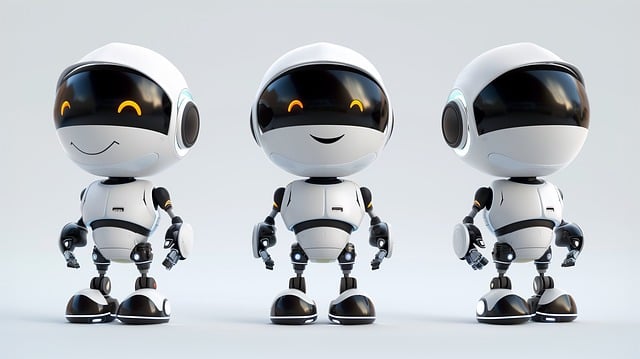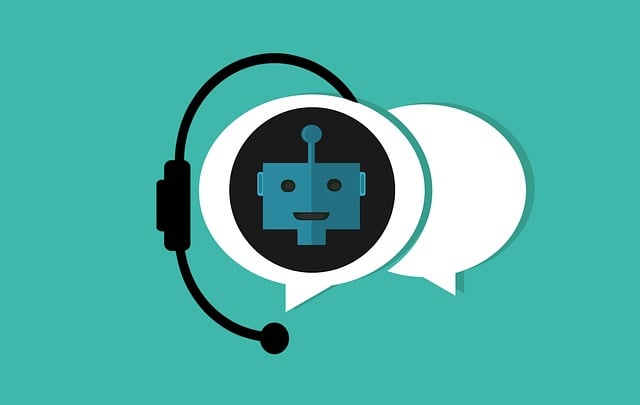Generative AI, driven by deep learning and transformer architectures like GPT, is transforming chatbot capabilities, enabling natural and intuitive conversations. Defining the chatbot's purpose and aligning its personality with that role is crucial for engaging user experiences. Development involves leveraging machine learning frameworks (TensorFlow, PyTorch) and extensive text datasets to train models, using techniques like pre-training or transfer learning. Deployment integrates the chatbot AI into platforms, with continuous learning based on user feedback ensuring accuracy and relevance.
Unleash the power of conversational AI with your own generative chatbot! This comprehensive guide takes you on a journey from concept to creation. First, uncover the secrets behind generative AI, understanding its role as the backbone of modern chatbots. Define your chatbot’s purpose and personality to craft an engaging experience. Learn essential building blocks, training techniques, and deployment strategies. Finally, explore continuous improvement methods to ensure your chatbot stays relevant and enhances user interactions. Discover the tools and insights needed to build a high-performing chatbot AI.
- Understanding Generative AI: The Foundation of Chatbots
- Designing the Chatbot's Purpose and Personality
- Building and Training the Model: Techniques and Tools
- Deployment and Continuous Improvement: Bringing Your Chatbot to Life
Understanding Generative AI: The Foundation of Chatbots

Generative AI forms the bedrock upon which advanced chatbot capabilities are built. Unlike traditional rule-based chatbots, generative AI models leverage machine learning to generate human-like text based on patterns learned from vast datasets. These models can understand and respond to a wide range of user inputs, offering more natural and flexible interactions.
At the heart of these systems lies deep learning, particularly transformer architectures like GPT (Generative Pre-trained Transformer). By pre-training on diverse textual data, these models gain an expansive knowledge base that enables them to generate coherent text across various topics. Integrating this technology into chatbot platforms allows for dynamic conversations, making interaction feel more human and intuitive, thereby enhancing user experiences.
Designing the Chatbot's Purpose and Personality

When designing a chatbot AI, defining its purpose is the first step in shaping an engaging and effective conversational agent. Consider what tasks or problems your chatbot will help solve for users. For example, it could be a customer service representative, providing product recommendations, or even offering personal financial advice. Understanding this core function will guide the development process.
The personality of a chatbot AI is equally important to capture user interest and foster positive interactions. Decide on traits that align with its purpose; for instance, a helpful chatbot might be designed with a friendly and approachable demeanor. Incorporate these attributes into its dialogue and response styles. Remember, the right balance of functionality and personality can make your chatbot AI memorable and enjoyable for users while ensuring it stays true to its intended role.
Building and Training the Model: Techniques and Tools

Creating a chatbot AI involves building and training a model that can understand, interpret, and generate human-like text. The process begins with selecting an appropriate machine learning framework, such as TensorFlow or PyTorch, which offers pre-built tools for neural network development. These frameworks enable developers to design architectures like Recurrent Neural Networks (RNNs) or Transformer models, both effective in sequence-to-sequence tasks, including conversational AI.
Training involves feeding vast amounts of text data into the model. The quality and diversity of this dataset are crucial; it should cover various topics, writing styles, and linguistic nuances to ensure the chatbot AI can adapt to different user queries. Techniques like fine-tuning pre-trained models, transfer learning, or training from scratch are employed based on project requirements. Tools like natural language processing (NLP) libraries and cloud computing platforms facilitate this process by providing scalable resources for model development and testing.
Deployment and Continuous Improvement: Bringing Your Chatbot to Life

Once your chatbot AI is developed and ready, deployment is the crucial step that brings it to life and makes it accessible to users. This process involves integrating the chatbot into existing platforms or creating a dedicated interface for interaction. A well-designed deployment strategy ensures seamless user experience and effective utilization of the chatbot’s capabilities. Regular user feedback and continuous improvement are essential components of this phase.
As your chatbot AI interacts with users, collecting and analyzing their responses will provide valuable insights. By incorporating these feedbacks, you can refine the chatbot’s algorithms, enhance its understanding of user queries, and improve overall performance. Continuous learning and adaptation ensure that your chatbot AI remains relevant, accurate, and aligned with user needs, creating a dynamic and ever-evolving conversational experience.
Creating a generative AI chatbot involves a blend of understanding advanced AI principles, designing a clear purpose and personality, utilizing robust building and training techniques, and continuously refining its performance. By mastering these steps, you can develop a highly effective and engaging chatbot AI that enhances user experiences and drives meaningful interactions in various applications.
